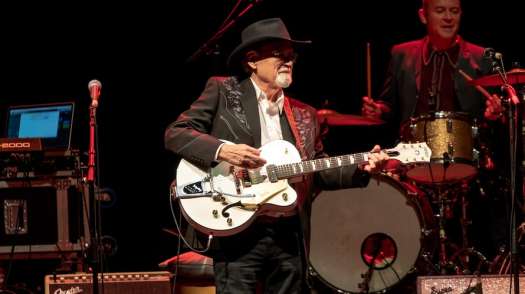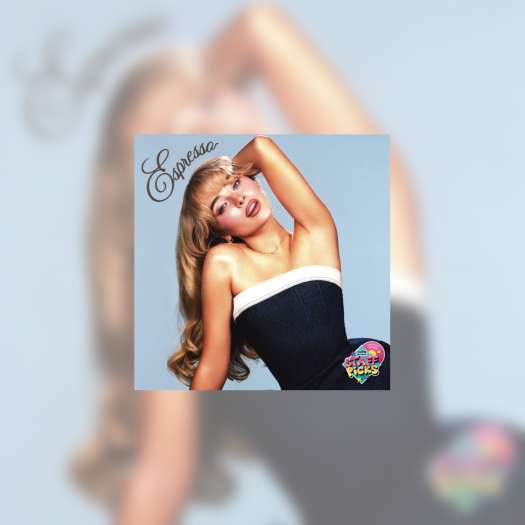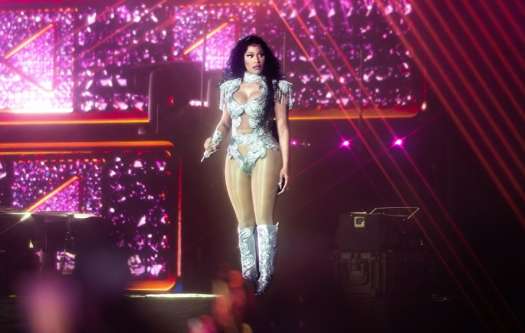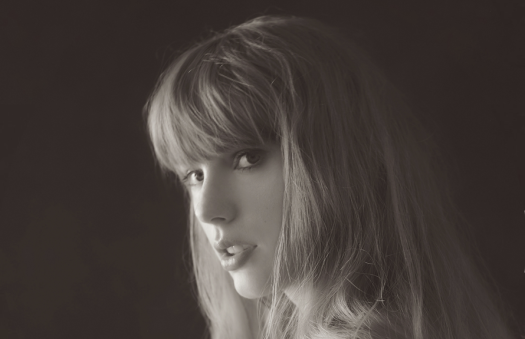If there's one thing Hollywood loves, it's taking an existing IP with a built-in fanbase and repackaging it in both form and content for new (and existing) audiences. For this reason alone, adaptations have become the dominant cultural logic of media production for this millennium, generating billions in revenue from every conceivable property type, including books (Harry Potter, Twilight, Dune, Game of Thrones), video games (The Witcher, Warcraft, Assassin's Creed), and especially comics (Disney/Marvel's MCU, Warner Bros.' DCEU, Sony's Spider-Man, 20th Century's X-Men).
Within this ruthlessly corporatized, bottom-dollar mindset then, it would seem that nothing is sacred — nothing beyond adaptation — not even something as groundbreaking and beloved as the famed Japanese anime series Cowboy Bebop. Created by Hajime Yatate (the collective pseudonym for the production team of director Shinichirō Watanabe, screenwriter Keiko Nobumoto, character designer Toshihiro Kawamoto, mechanical designer Kimitoshi Yamane and composer Yoko Kanno), the original series aired throughout the late '90s for a single season of 26 episodes, followed by the standalone film Cowboy Bebop: Knockin' on Heaven's Door (2001). Upon release, the series was praised for introducing new Western audiences to anime in the early 2000s, receiving near universal acclaim from critics and fans alike. It's now hailed as one of the best anime series of all time.
All of this is to say that there was a justified feeling of trepidation following Netflix's 2018 announcement of a planned live-action adaptation for the series. Given the critical disaster that was 2017's Death Note, alongside other ill-fated anime adaptations (2009's Dragonball: Evolution, 2010's The Last Airbender, 2017's Ghost in the Shell), Hollywood's track record for adapting the medium into compelling live-action narratives is abysmal to say the least.
With any critique of adaptation, it's all too easy to get caught up in cynical, jaded questions of fidelity and faithfulness, levelling claims of betrayal, deformation and bastardization at the hubris of new versions of old things. In truth though, the more substantial questions to ask are ones of affect and intent. Does the adaptation feel right? Does it tell the story well? And if it makes changes to the original, do they serve a purpose and stand on their own merits?
For those unfamiliar with the original anime, the main through-line and plot contours remain unchanged. Set in 2071, a hyperspace gateway accident has destroyed the Moon and rendered Earth largely uninhabitable, forcing the human diaspora to take to the stars with terraformed settlements across Mars, Venus, the Jovian moons and the asteroid belt. The series follows the exploits of three bounty hunters known as "cowboys": Spike Spiegel (John Cho), a Martian mob enforcer turned outlaw; Jet Black (Mustafa Shakir), a former interstellar police detective; and Faye Valentine (Daniella Pineda), a wise-cracking amnesiac. The reluctant trio bounce around the solar system together on their ship, the Bebop, moving from job to job, barely scraping together enough cash to feed themselves as they encounter a slew of eclectic characters and dangerous criminals while also trying to outrun their collective pasts.
If there's one thing Netflix gets right, it's the sense of Bebop's lived-in world. Watanabe and company used their affection for the rich traditions of Westerns, film noir and sci-fi to create an enthralling fictional universe that felt gritty, believable and entirely unique: domed craters filled with skyscrapers, towering overpasses and lakes; spinning orbital casinos, cosmic fast-food joints and theme park rides nestled in excavated asteroids; bustling urban centres with street vendors, old-fashioned cars, empty alleys and neon skylines; interstellar highways filled with shipping lanes and toll attendants; dusty border towns and hermit enclaves, where regular people try to get by as their miniature worlds keep on spinning. And to their credit, showrunner André Nemec and principal writer Christopher Yost manage to faithfully recreate this lived-in world in stunning detail, through a grounded mix of practical sets, real-world location shooting and expensive-looking CG/VFX magic. In particular, the Bebop itself is rendered in glorious detail with tangible grit and texture courtesy of set decorator Anneke Botha.
With Watanabe serving as an executive consultant and Yoko Kanno returning to provide the music, directors Alex Garcia Lopez and Michael Katleman manage to capture a solid mix of Bebop's more propulsive and sombre elements. Across ten hour-long episodes, the show features a selection of characters and standalone plot lines cribbed from the original anime, rounded out by kinetic martial arts scenes, visceral shootouts and aerial dogfights, while also allowing quieter moments to breathe and resonate, as the characters grow and learn to trust one another. It's also clear that Netflix wanted this live-action version of Bebop to stand on its own, bending the adaptation to fit the long-form structure of streaming (and likely the invested potential for future seasons). The most obvious indicator is that the episode or "session" titles are all new and different, rather than copied straight from the source material.
At the level of performances, the primary cowboy trio mostly hit their mark. Cho brings a level of Bruce Lee-style charisma, making his impulsive shoot-first ethos and sardonic banter with Shakir's burly and paternal Jet feel effortless and natural. After some shaky introductions, Pineda's Faye is given the chance to show depth and nuance, and the show wisely avoids over-sexualizing her character as the typical femme fatale or damsel in distress. Unfortunately, where the show begins to fall apart is in its desire for independence, as certain creative decisions will inevitably create difficulties upon entry for die-hard fans. For one, the highly stylized nature of the original anime means that, by bringing things to life in a live-action setting, certain scenes and character elements border on parody and cartoonish levels of fan-service. Some of the costuming choices evoke thoughts of bad cosplay, so much so that it breaks audience immersion when so much of the set design is otherwise excellent.
Additionally, major writing decisions in the season's later episodes offer a significant departure from the core plot, particularly the love-triangle between Spike, his forlorn love interest Julia (Elena Satine), and his vindictive mob rival Vicious (Alex Hassell). Choosing to expand on the Syndicate plot line, adding further backstory and motivation to the largely peripheral roles of Vicious and Julia, makes some sense at the level of casting and television production. And yet, by doing so, the live-action version of Cowboy Bebop robs itself of the philosophical permanence, ennui and existential loss that permeated the original anime. Not to mention that Cho, Satine and Hassell have little to no chemistry as love interests, causing their scenes and inevitable confrontations to drag on and feel perfunctory, when they should be the dynamic, animating force of a love story that drives the shows' overall thematic arc.
Watanabe's featured tagline for the original Cowboy Bebop dared to call it "a new genre unto itself." Although he later claimed this to be an exaggeration, this notion gets to the heart of what made the anime so innovative, in how it encapsulated a seamless blend of cinematic influences — cyberpunk, noir, westerns, exploitation cinema, space opera, comedy — to create something undeniably cool and refreshingly idiosyncratic. And while it may not be an entirely soulless, shot-for-shot remake (although that tendency certainly does creep in from time to time), this new version of Cowboy Bebop is painfully desperate to become a new thing unto itself but never quite manages to hide the seams. Ultimately, Netflix's live-action adaptation struggles to carry that weight, no matter how hard it tries.
(Netflix)Within this ruthlessly corporatized, bottom-dollar mindset then, it would seem that nothing is sacred — nothing beyond adaptation — not even something as groundbreaking and beloved as the famed Japanese anime series Cowboy Bebop. Created by Hajime Yatate (the collective pseudonym for the production team of director Shinichirō Watanabe, screenwriter Keiko Nobumoto, character designer Toshihiro Kawamoto, mechanical designer Kimitoshi Yamane and composer Yoko Kanno), the original series aired throughout the late '90s for a single season of 26 episodes, followed by the standalone film Cowboy Bebop: Knockin' on Heaven's Door (2001). Upon release, the series was praised for introducing new Western audiences to anime in the early 2000s, receiving near universal acclaim from critics and fans alike. It's now hailed as one of the best anime series of all time.
All of this is to say that there was a justified feeling of trepidation following Netflix's 2018 announcement of a planned live-action adaptation for the series. Given the critical disaster that was 2017's Death Note, alongside other ill-fated anime adaptations (2009's Dragonball: Evolution, 2010's The Last Airbender, 2017's Ghost in the Shell), Hollywood's track record for adapting the medium into compelling live-action narratives is abysmal to say the least.
With any critique of adaptation, it's all too easy to get caught up in cynical, jaded questions of fidelity and faithfulness, levelling claims of betrayal, deformation and bastardization at the hubris of new versions of old things. In truth though, the more substantial questions to ask are ones of affect and intent. Does the adaptation feel right? Does it tell the story well? And if it makes changes to the original, do they serve a purpose and stand on their own merits?
For those unfamiliar with the original anime, the main through-line and plot contours remain unchanged. Set in 2071, a hyperspace gateway accident has destroyed the Moon and rendered Earth largely uninhabitable, forcing the human diaspora to take to the stars with terraformed settlements across Mars, Venus, the Jovian moons and the asteroid belt. The series follows the exploits of three bounty hunters known as "cowboys": Spike Spiegel (John Cho), a Martian mob enforcer turned outlaw; Jet Black (Mustafa Shakir), a former interstellar police detective; and Faye Valentine (Daniella Pineda), a wise-cracking amnesiac. The reluctant trio bounce around the solar system together on their ship, the Bebop, moving from job to job, barely scraping together enough cash to feed themselves as they encounter a slew of eclectic characters and dangerous criminals while also trying to outrun their collective pasts.
If there's one thing Netflix gets right, it's the sense of Bebop's lived-in world. Watanabe and company used their affection for the rich traditions of Westerns, film noir and sci-fi to create an enthralling fictional universe that felt gritty, believable and entirely unique: domed craters filled with skyscrapers, towering overpasses and lakes; spinning orbital casinos, cosmic fast-food joints and theme park rides nestled in excavated asteroids; bustling urban centres with street vendors, old-fashioned cars, empty alleys and neon skylines; interstellar highways filled with shipping lanes and toll attendants; dusty border towns and hermit enclaves, where regular people try to get by as their miniature worlds keep on spinning. And to their credit, showrunner André Nemec and principal writer Christopher Yost manage to faithfully recreate this lived-in world in stunning detail, through a grounded mix of practical sets, real-world location shooting and expensive-looking CG/VFX magic. In particular, the Bebop itself is rendered in glorious detail with tangible grit and texture courtesy of set decorator Anneke Botha.
With Watanabe serving as an executive consultant and Yoko Kanno returning to provide the music, directors Alex Garcia Lopez and Michael Katleman manage to capture a solid mix of Bebop's more propulsive and sombre elements. Across ten hour-long episodes, the show features a selection of characters and standalone plot lines cribbed from the original anime, rounded out by kinetic martial arts scenes, visceral shootouts and aerial dogfights, while also allowing quieter moments to breathe and resonate, as the characters grow and learn to trust one another. It's also clear that Netflix wanted this live-action version of Bebop to stand on its own, bending the adaptation to fit the long-form structure of streaming (and likely the invested potential for future seasons). The most obvious indicator is that the episode or "session" titles are all new and different, rather than copied straight from the source material.
At the level of performances, the primary cowboy trio mostly hit their mark. Cho brings a level of Bruce Lee-style charisma, making his impulsive shoot-first ethos and sardonic banter with Shakir's burly and paternal Jet feel effortless and natural. After some shaky introductions, Pineda's Faye is given the chance to show depth and nuance, and the show wisely avoids over-sexualizing her character as the typical femme fatale or damsel in distress. Unfortunately, where the show begins to fall apart is in its desire for independence, as certain creative decisions will inevitably create difficulties upon entry for die-hard fans. For one, the highly stylized nature of the original anime means that, by bringing things to life in a live-action setting, certain scenes and character elements border on parody and cartoonish levels of fan-service. Some of the costuming choices evoke thoughts of bad cosplay, so much so that it breaks audience immersion when so much of the set design is otherwise excellent.
Additionally, major writing decisions in the season's later episodes offer a significant departure from the core plot, particularly the love-triangle between Spike, his forlorn love interest Julia (Elena Satine), and his vindictive mob rival Vicious (Alex Hassell). Choosing to expand on the Syndicate plot line, adding further backstory and motivation to the largely peripheral roles of Vicious and Julia, makes some sense at the level of casting and television production. And yet, by doing so, the live-action version of Cowboy Bebop robs itself of the philosophical permanence, ennui and existential loss that permeated the original anime. Not to mention that Cho, Satine and Hassell have little to no chemistry as love interests, causing their scenes and inevitable confrontations to drag on and feel perfunctory, when they should be the dynamic, animating force of a love story that drives the shows' overall thematic arc.
Watanabe's featured tagline for the original Cowboy Bebop dared to call it "a new genre unto itself." Although he later claimed this to be an exaggeration, this notion gets to the heart of what made the anime so innovative, in how it encapsulated a seamless blend of cinematic influences — cyberpunk, noir, westerns, exploitation cinema, space opera, comedy — to create something undeniably cool and refreshingly idiosyncratic. And while it may not be an entirely soulless, shot-for-shot remake (although that tendency certainly does creep in from time to time), this new version of Cowboy Bebop is painfully desperate to become a new thing unto itself but never quite manages to hide the seams. Ultimately, Netflix's live-action adaptation struggles to carry that weight, no matter how hard it tries.




